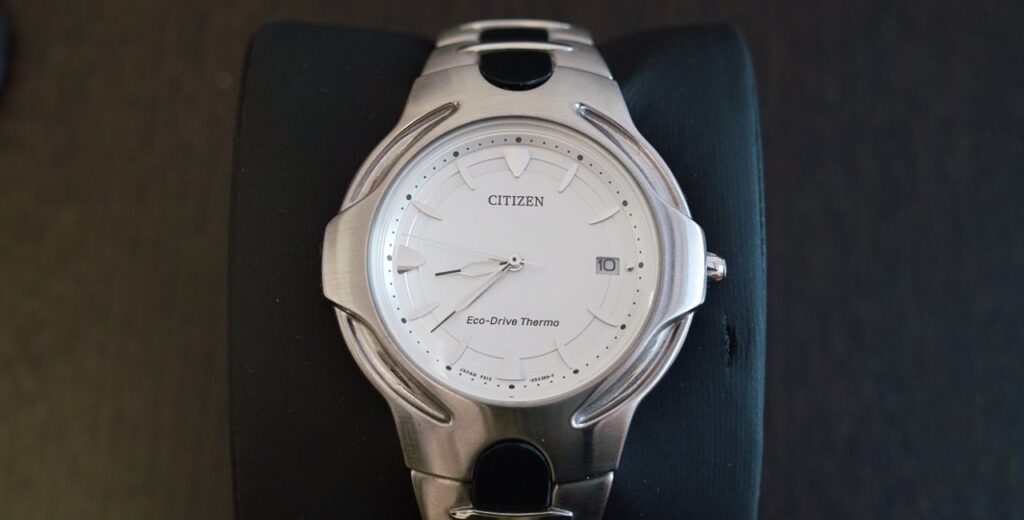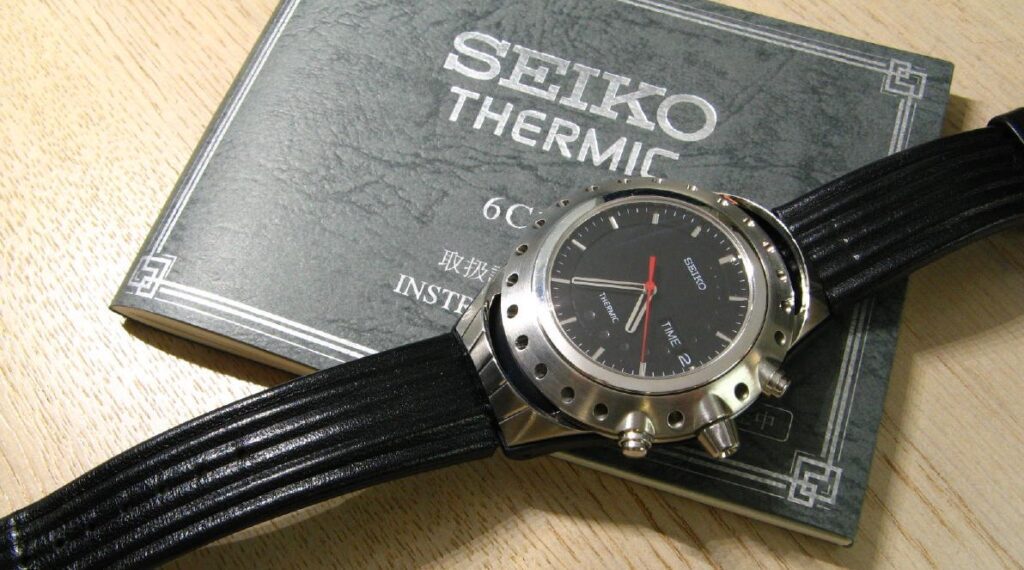Citizen “Thermo” Eco-Drive

No one has to be the Human Torch to generate some body heat. Trying to capitalize on this biological energy source, watchmakers Seiko and Citizen released watches that boasted human-heat-powered movements back in the late 1990s. That’s right, instead of solar power, or battery power, these massive watch companies experimented with thermoelectric power. Not to be confused with thermocompensated quartz (something we’ve covered here before), these quartz watches use temperature differences between the wearer’s wrist and the outside world to generate power. It’s sort of amazing that this idea was incorporated into Citizen’s Eco-Drive line and released by Seiko since there are such varied climates in different parts of the world. Tech like this requires specific conditions to run continuously. So ahead, we’ll look at those conditions as well as other general features on these body-heat-centric timekeepers.
Seiko
Thermic Kicks Things Off
Seiko released their “Thermic” line in 1998. Their release was limited to just 500 pieces—a move that was honestly (in retrospect) pretty wise. It was a novelty line that mostly caught the attention of collectors. Their rarity today still has dedicated Seiko fans buzzing about their construction. Many owners continue to marvel and boast regarding the technology in online forums. Seiko’s thermic 6C12 movement was a pretty killer release at a time when solar-powered watches were becoming well established in the market. Citizen—being Seiko’s main competitor—responded quite quickly to the release.
Citizen
Thermo 1999
One year after Seiko released the “Thermic” Citizen announced their “Thermo” watch line. However, the watch itself didn’t get showcased at Baselworld—and then released—until 2001. Their first movement was dubbed the Caliber F910 Thermoelectric Power Generation Quartz (a mouthful). Eco-Drive “Thermo” was a useful shorthand, and the initial release was pretty warm. However, because of the way the tech works it fell out of favor compared to other Eco-Drive watch lines. Because the watch needed a warmer temperature than the wearers wrist on top of the case, it wasn’t as adaptable as other Citizen “Eco” movements. After the F910 there were models like the CTY66-0342 which tried different design work on the case and band. In the end Citizen opted-out of manufacturing these watches. But like Seiko’s Thermic, the Thermo from Citizen still has a cult following.
How It
Works

Both Seiko and Citizen’s watches employ what’s basically a thermocouple in the movement. Thermocouples conduct electricity that’s generated by the feedback between disparate temperatures. Basically, the spread between hot and cold electrifies the atoms and can be conducted with certain chemicals. Among these chemicals is bismuth—an element that’s also found in stuff like Pepto-Bismol (thus “Bismol”). Citizen’s “Thermo” uses a BiTe (Bismuth Telluride) thermogenerator plate to activate the process. When the temperature above the wearer’s wrist is cooler than their body temperature the watch charges better. When the temperatures are similar, the watch doesn’t charge as well. Charges would often run low on these watches because of the latter.
Hot
Ticket Item
Though the tech is very unique, it became impractical for mass production. That being said, they’re worth hunting down if you’re a watch collector. They’re a hot item that’s still fairly inexpensive to pick up (though they cost thousands of dollars in their day). So turn up the heat on the search, but not too high, your Thermo will start to lose its charge.
Times Ticking has been in operation for more than 30 years, since 1982. We have performed watch repair for customers both locally and internationally. If it Ticks! We KNOW it! Our team of watch repair technicians have a combined experience in watchmaking of over 120 years.

